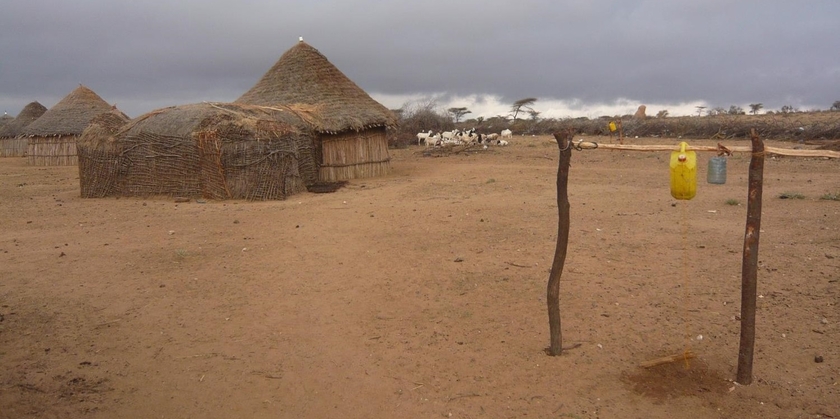Department Environmental Social Sciences
Changing handwashing behavior in southern Ethiopia through infrastructural and commitment interventions

Regular handwashing is the single most effective prevention against diarrheal disease. However, handwashing rates are low in many developing countries, including Ethiopia. A handwashing promotion project in the Borena Zone of southern Ethiopia aimed to increase handwashing rates in communities through systematic behavior change strategies. The strategies applied, and especially the tippy tap promotion, proved to be more effective than a standard educational approach: 95% of intervention households were successfully motivated to construct a tippy tap. Three months after the intervention had ended, water and soap were present at the tippy tap in 50% - 80% of the households.
Project details
Context
Handwashing with soap efficiently prevents diarrhea, one of the leading causes of disease burden globally. As in many other developing countries, handwashing rates are low in Ethiopia. Increased handwashing rates are thus the goal of many hygiene projects run by governmental and non-governmental organizations. However, the effectiveness of these projects has seldom been verified. It is expected that systematic behavior change strategies are more effective than standard approaches, which have often been limited to awareness-raising and knowledge transfer.
Objectives
The main goal of this project was to promote handwashing with soap at key times in a rural area in southern Ethiopia by means of systematic behavior change strategies. Specific objectives were:
- To assess current handwashing practices and the behavioral factors determining these practices.
- To design, implement, and evaluate systematic behavior change strategies to promote handwashing.
Activities
Step 1 & 2: Identify, measure, and determine behavioral factors of handwashing:
- Qualitative research was conducted to identify potential behavioral factors.
- A baseline survey on handwashing practices and behavioral determinants of handwashing was conducted in 462 households in February and March 2012.
- The behavioral factors influencing handwashing were specified by means of regression analyses. These were others’ behavior and others’ approval, confidence in performance, continuation and recovering, and impediments. In addition, observations suggested that a lack of handwashing infrastructure and forgetting to wash hands were major constraints on regular handwashing.
Step 3: Select behavior change techniques (BCTs) and design behavior change strategies to promote handwashing:
- Three BCTs expected to promote the key factors of handwashing were selected. These were (1) using memory aids and environmental prompts, (2) providing infrastructure, and (3) prompting public commitment.
- The BCTs were combined in two behavior change strategies, a tippy tap promotion and a public commitment session, and implemented in combination with a standard education approach.
Step 4: Implement and evaluate behavior change strategies:
- The strategies’ effectiveness was assessed through a before-after control trial.
- The behavior change strategies were implemented in three intervention villages by the local non-governmental organization, the Gayo Pastoral Development Initiative.
- The strategies were compared to a control village that only received the standard education approach (an f-diagram exercise).
- A follow-up survey on handwashing practices, behavioral determinants and the strategies’ evaluation was conducted in 514 households in February and March 2013.
Findings and conclusion
- 95% of intervention households were successfully motivated to construct a tippy tap.
- Three months after the intervention had ended, water and soap were present at the tippy tap in 50% - 80% of the households.
- The systematic behavior change strategies, and especially the tippy tap promotion, changed behavior more successfully than the standard education approach.
- This was because they successfully changed the critical behavioral factors of handwashing, especially others’ behavior, impediments, and remembering.
To increase effectiveness, handwashing interventions should be based on theory and driven by data.
Related publications
Project data
Duration: January 2012 to September 2013
Partners
- Oxfam America (OA)
- Gayo Pastoral Development Initiative (GPDI)
Funding: Oxfam America

